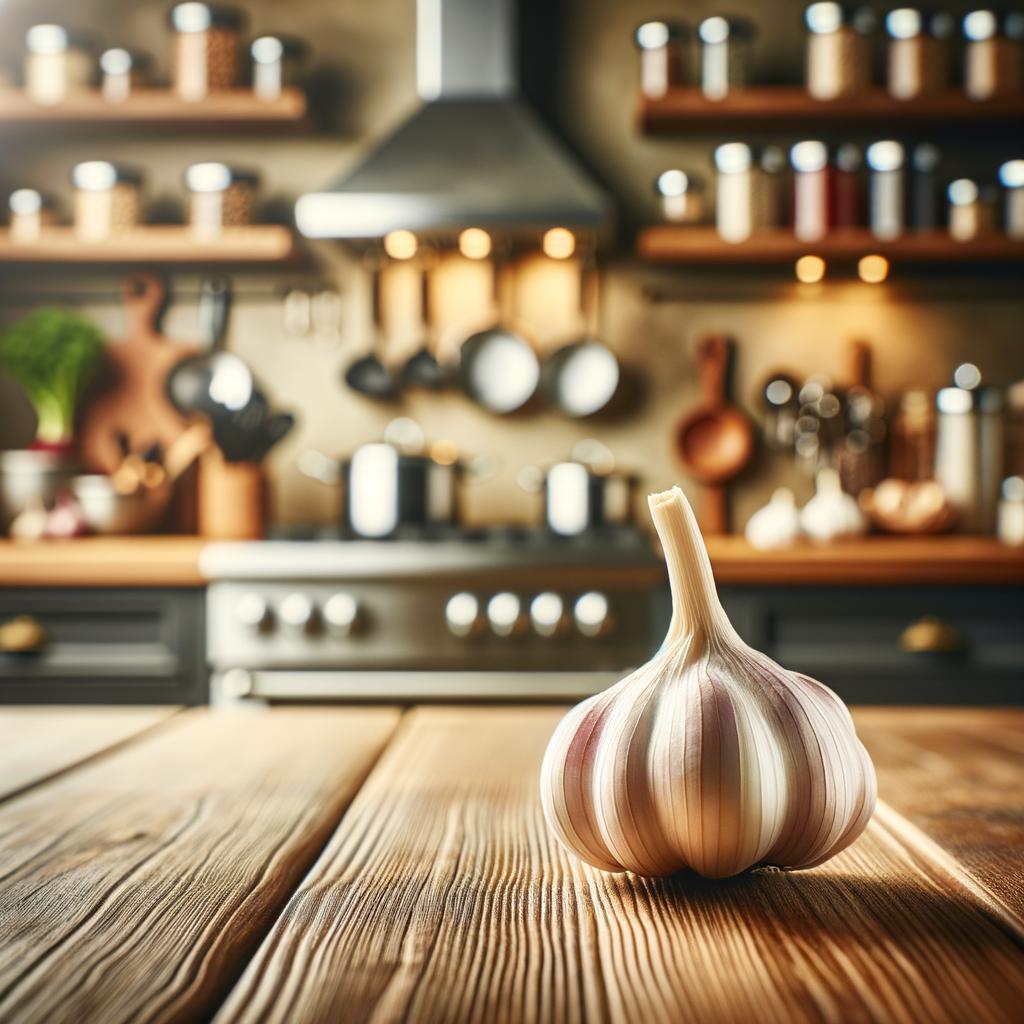Garlic

Description
Garlic, a humble yet powerful ingredient, is a small, bulbous plant belonging to the Allium family. Each bulb, encased in a thin, papery white or purple skin, consists of individual segments known as cloves. The number of cloves can vary, typically ranging from 10 to 20 per bulb. The appearance of garlic can be deceiving as its small size belies the intense flavor it holds within. When peeled and crushed, the cloves release a pungent, spicy aroma that mellows and sweetens remarkably upon cooking. Garlic's unique flavor, a blend of heat and heartiness, sets it apart from its Allium relatives, like onions and leeks.
Primary Uses
Garlic is used extensively in cooking worldwide, from the rustic kitchens of Italy to the bustling street food stalls of Asia. It's a key component in many dishes, adding depth and flavor to sauces, marinades, soups, and stir-fries. Garlic is often used in its raw form, minced or crushed, but can also be roasted to bring out a sweet, caramel-like flavor. Beyond its culinary uses, garlic has been recognized for its medicinal properties for centuries. It's believed to boost the immune system, reduce blood pressure, and even ward off vampires in folklore!
History
Garlic's history is as rich and layered as its flavor. Originating in central Asia over 6,000 years ago, it quickly spread to various civilizations, from the Egyptians who fed it to workers building the pyramids, to the Greeks and Romans who believed in its strength-giving properties. Throughout the Middle Ages, garlic was used as a protective charm against evil spirits and during the plague. Today, it's a beloved ingredient in kitchens worldwide, a testament to its enduring appeal and versatility.
Nutritional Information
Garlic is not just a flavor powerhouse, but a nutritional one as well. It's rich in vitamin C, vitamin B6, and manganese. It also contains trace amounts of various other nutrients, making it a surprisingly nutritious addition to your diet. Garlic is known for its antioxidant properties, which can help combat sickness and promote heart health. Compared to similar ingredients like onions, garlic has a higher concentration of sulfur compounds, which are thought to bring some of its health benefits.
In the grand tapestry of food history, garlic has woven its own unique, flavorful thread. From ancient civilizations to modern kitchens, its pungent aroma and robust flavor continue to enchant our palates, making every dish a delicious narrative of its own.

